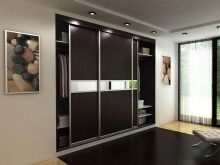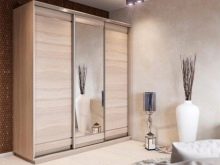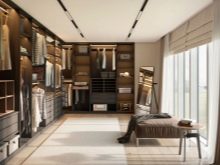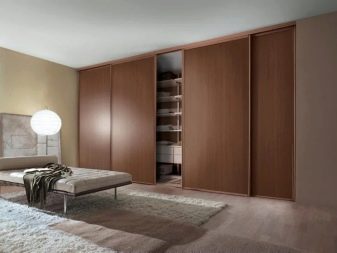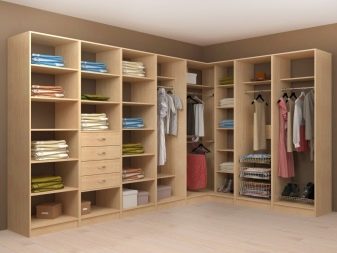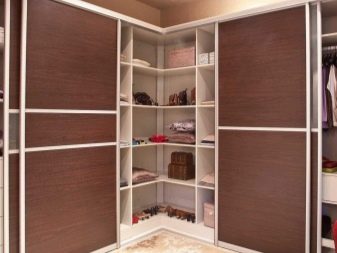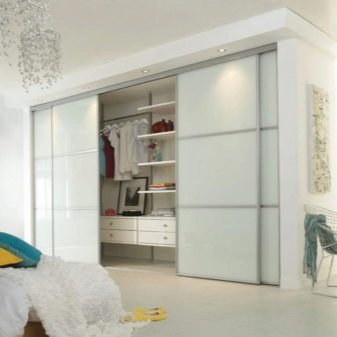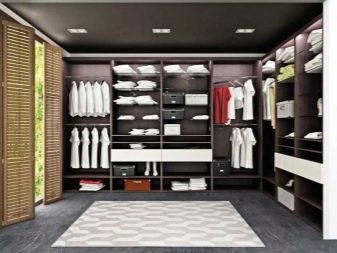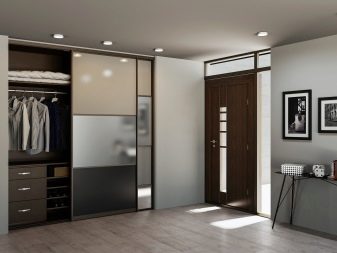Dressing room or closet: which is better?
Wardrobe or wardrobe - which is better to choose? This question often arises for people planning to create a comfortable space for storing linen and clothes in their home or apartment. The fashion for separate modular storage systems is increasingly forcing homeowners to give preference to the first option. However, before making a final decision, it is worthwhile to figure out how the wardrobe and its built-in version differ from the wardrobe.
The main difference between a wardrobe and a wardrobe
Choosing a storage system always starts with comparisons. It is quite simple to understand how the wardrobe or its built-in version differs from the dressing room. It is enough to pay attention to the features of the design itself. The dressing room does not have wardrobes with doors - only open shelves, racks, hangers, in rare cases covered by curtains. It is this factor that allows you to place a full-fledged storage system on a relatively small area.
In the case of wardrobes - built-in or in compartment format - the doors are always present. Moreover, the interior space is limited by the capacity of the compartments and their configuration. Accordingly, it can be quite difficult to place things of different lengths and formats inside.
Differences in content
The filling of the dressing room and the closet is also different. Much here depends on what kind of design is used in the interior. Two filling options are available for the dressing room.
-
Modular. In this case, the storage system is created on a small area in the bedroom, living room, and another living room. It consists of individual units - baskets, shelves, stands, drawers and open shelving. The minimum area of such a dressing room is 2 m2, while on the surface of the wall, modules can be placed from bottom to top, have different indicators of width and length.
- Stationary. In this case, a separate room is allocated for the dressing room - a pantry, a fenced off part of the room, and the racks are located on both walls parallel to each other. In addition to clothes and shoes, seasonal sports equipment, bedding, and other items can be stored in such a room. The filling is represented not only by wall racks, but also by baskets, boxes, chests, roll-out rails.
The filling of wardrobes or built-in options depends on their layout. Direct storage systems are most often made built-in, with placement in a niche. They hold rails for outerwear, short shelves, drawers. The closest to the dressing rooms in terms of content are U-shaped wardrobes, suitable for placement in square and rectangular rooms. The depth of such structures is 0.5-0.6 m.
Compact L-shaped wardrobes are also often viewed as an alternative to dressing rooms. In terms of area, they are quite comparable to modular systems, they occupy two adjoining walls. Rails for outerwear, baskets and boxes, shelves for linen are used here as filling.
Which is better to choose: a comparison of pros and cons
Comparing advantages and disadvantages is the basis for making the right choice when planning storage systems. Each option has its own pros and cons. It is worth considering them in more detail.
A built-in wardrobe is worth choosing if you need:
- use the entire height of the room as efficiently as possible;
- create a construction of a non-standard shape or design;
- save your budget;
- place the storage system in a limited area of less than 1.3 m2.
There are also plenty of drawbacks to the built-in wardrobes. Such a structure is erected in a specific room, it cannot be taken with you when moving, or moved.
If mobility is important, it is easier to choose a classic wardrobe with sliding doors or swing doors.
The dressing room has its advantages and disadvantages. A dedicated storage system can be equipped on an area that is not fully used for other purposes - in a narrow closet, on a spacious loggia, in a niche in a living room. A number of factors can also be attributed to its obvious advantages.
- Ability to abandon bulky pieces of furniture. Instead of cluttering a room with dressers and wardrobes, all things can be stored in one place.
- Use of complex architectural elements. A corner, a ledge, a niche become the virtues, not the problems of the room.
- More rational and correct storage of clothes. She does not wrinkle, remains presentable longer, always in sight.
- Ensuring sufficient air exchange. There are no ventilation problems typical for cabinets.
- Mobility. The dressing room can be moved inside the apartment or when moving, it can be equipped in a new place without additional expenses.
Dressing rooms also have drawbacks. Their filling - mesh, modular - is much more expensive. In addition, to accommodate a dressing room, at least 2 m2 of free space is required. In other cases, it is better to choose a wardrobe.
The variety of storage systems provides many options for placing things. The wardrobe has its merits. For example, you can make its doors mirrored - in this case, the room will look more spacious, and fitting things will become more comfortable. Inside, such storage systems differ little from built-in or hinged ones - the filling can be selected according to an individual order.
But there are also disadvantages. Such designs are equipped with fittings that fail quite quickly. In addition, when opening the door, they create noise, and it is simply impossible to get an overview of the entire interior of the wardrobe.

